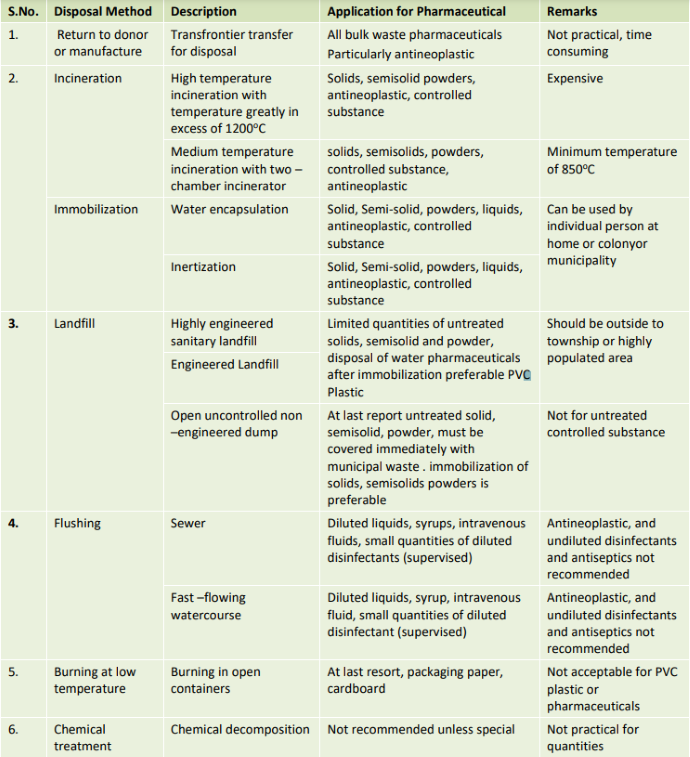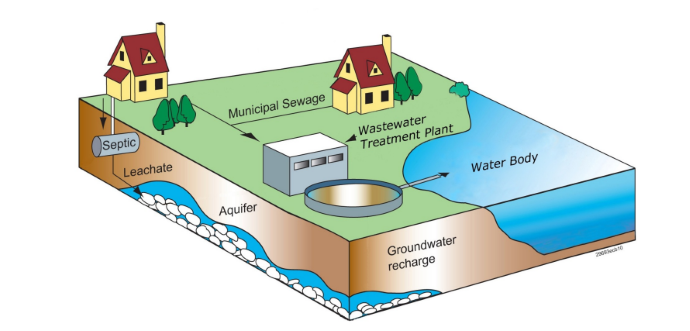
Getty Images
How to Properly Dispose of Unused Drugs, Understanding Key Roles
All members of the healthcare system, including manufacturers, providers, and patients, may play a role in properly disposing of unused or expired drugs and medicines.
Unused medications pose a significant threat to healthcare, considering the impacts of improper disposal and drug misuse. Over-the-counter (OTC) and prescription medications that are expired or no longer needed by the intended patient should be appropriately disposed of. Beyond a patient’s role in ensuring proper disposal, there are multiple key roles filled by healthcare professionals and other industry members that can facilitate the appropriate disposal of unwanted medications.
Most pharmaceutical products, 631 out of 713, are found in concentrations above detection limits worldwide. Additionally, 16 pharmaceutical products were detected globally in surface, drinking, and groundwater. This data implies incorrect disposal of unused medicines. If unwanted medicines are disposed of inappropriately, they pose a significant environmental and public health risk.
According to research, when leftover pharmaceuticals are disposed of via flushing, they have the potential to taint water sources, resulting in unintended exposure to the chemical components of these drugs. This can negatively impact aquatic creatures and ultimately affect the quality of our drinking water. In certain aquatic environments, researchers have discovered that fish and other species exhibit significant reproductive abnormalities due to exposure to hormones, antidepressants, steroids, and endocrine-disrupting compounds (EDCs).
Drug Disposal Methods
The HHS suggests multiple ways to minimize the risks of leftover pharmaceutical products. These approaches involve participating in National Prescription Drug Take Back Day, utilizing year-round drug disposal facilities, following medical organizations' instructions for safe disposal at home, and keeping pharmaceutical products away from children until they can be disposed of properly.Although many people believe the best way to dispose of unused prescription drugs is to flush them down the toilet, the Environmental Protection Agency (EPA) advised that patients do not dispose of prescription or OTC drugs by flushing them or washing them down the drain unless the product label or the patient information explicitly instructs them to do so.
Alternatively, the FDA, EPA, and US Drug Enforcement Administration (DEA) offer other methods of disposing of unwanted or expired medicines.
Drug Take-Back Locations and Events
One of the easiest ways to ensure proper medication disposal is to return unused or expired medications to a disposal site. Although these sites vary based on the patient's location, nearly all places have a regulatory process for collecting and disposing of unused drugs.
Patients may also be able to return unused medicines to their pharmacy, as some pharmacies have on-site medicine drop-off boxes. In addition to asking their pharmacists about drop boxes, patients may also ask about mail-back programs and other easy but safe disposal options.
Another easy choice for unused drug disposal is drug take-back events. The DEA recommends researching local drug take-back programs by contacting local trash and recycling services. The DEA also has a database for patients and officials to locate controlled substance public disposal locations.
This year, the DEA is hosting National Drug Take-Back Day on April 22, 2023, from 10 AM to 2 PM. By visiting the organization’s website, patients and providers can locate collection sites near them. The organization hosts the day twice a year, in April and October.
In April 2022, National Drug Take-Back Day recruited 4,427 law enforcement officials and 5,144 sites. The agency collected 721,093 lbs of disposed of drugs in April 2022, for an all-time total of 15,989,566 lbs. To date, the DEA has helped collect over 8,000 tons of unused pharmaceutical drugs, with more anticipated with coming events.
Flushing Disposal
Although most medications should not be flushed down the toilet or washed down the sink, the FDA has an approved flush list for hazardous drugs associated with accidental poisoning and abuse. Fentanyl patches are a standard product with instructions to flush due to the skin absorption of strong medicine that may be present even after the patch is used.
The FDA’s Flush List includes commonly misused or fatal products when misused. While the best option is to find a drug take-back location, the FDA notes that the risk of these medications for children, adults, and pets may make flushing a necessary disposal method for those that do not have a nearby drug take-back location.
The FDA Flush List includes drugs that contain the following words:
- Buprenorphine
- Fentanyl
- Hydrocodone or benzhydrocodone
- Hydromorphone
- Meperidine
- Methadone
- Morphine
- Oxycodone
- Oxymorphone
- Tapentadol
- Sodium oxybate and sodium oxybates
Additionally, the list includes diazepam rectal gel and the methylphenidate transdermal system.
The list fails to account for the detrimental environmental and subsequent health impacts of flushing these substances.
Other Home Disposal Methods
Pfizer notes that, in the US, most pharmaceutical products can be disposed of in a bag with cat litter or other household trash instead of being flushed. One caveat is that this disposal method increases pollution rates. In addition, there is a danger of products leaking into the surrounding soil or water, harming local communities and environments.
According to the EPA, appropriately disposing of pharmaceutical products involves taking them out of their original container and mixing them with an undesirable substance, such as kitty litter or coffee grounds, to reduce the risk that someone will take them out of the garbage.
Additionally, patients are advised to seal the mixture in a disposable container like a sealable plastic bag or sealed container. After removing personal information from the drug bottle, patients are advised to place the mixture and empty containers in the trash.
According to the EPA, following appropriate disposal instructions helps minimize the rates of pediatric and pet poisonings. Additionally, it can deter misuse of pharmaceutical products, reduce the risks associated with taking the wrong medication, dose, or expired medication, and prevent medicines from entering water sources.
A 2020 article published in the International Journal of Pharmaceutical Sciences Review and Research identified six different methods of drug disposal, including those in the following chart:

Impacts of Improper Medicine Disposal
Improper disposal of OTC and prescription medicines poses a significant public health threat, increasing the risk of misuse and environmental health outcomes.
A 2017 study published in Science of the Total Environment found that the health risk associated with flushing approved products down the drain is negligible to human health. However, many believe updated research must be conducted as pollution levels have increased recently.
Beyond that, the study does not account for the environmental health outcomes and their subsequent health outcomes in the long term. Levels of some active pharmaceutical ingredients (APIs) may impact local ecosystems, causing a long-term change in healthcare.
The EPA notes that people who flush or wash unused drugs down the drain when not explicitly recommended may contaminate drinking water. The graphic below from the EPA shows how flushing pharmaceutical products in houses with a septic tank can cause them to seep into the ground and groundwater.

The graphic also shows that some locations with connected wastewater treatment plans may pass flushed pharmaceutical products to wastewater treatment plants. Because most wastewater treatment plans are not prepared to remove medications, the water may be tainted with pharmaceutical products when it enters rivers and lakes, leading to contaminated drinking water.
Role of Healthcare Industry Members
An article published in the AMA Journal of Ethics discussing shared responsibility for proper medication disposal describes the key players who are in the position to ensure appropriate medication disposal and safety. Prescribers, pharmacists, manufacturers, and patients each play a role in facilitating proper disposal of unused drugs.
Prescribers
Prescribers can ensure the appropriate disposal of unused or expired medications and are responsible for educating their patients on the proper disposal method. Healthcare providers may provide a list of drop-off locations or the appropriate disposal methods as they prescribe medications.
Beyond educational efforts, prescribers are encouraged to prescribe medications appropriately to minimize the risk of leftover drugs. Additionally, regularly reviewing a patient’s medications can help reduce a potential surplus of unused drugs.
Pharmacists
“Pharmacists, in particular, are uniquely positioned to educate the public on medication disposal, given their medication expertise, accessibility, and service as the usual last point of contact for patients,” states the AMA article.
The role of a pharmacist in the prescription process allows them to provide drug education information to the patient. In addition to describing the appropriate drug use, pharmacists can educate patients on how to store drugs safely and what to do when they need to dispose of them.
Some pharmacies may have a drop-off location for unused medications or a disposal program, making them a great point of contact for those with unwanted or expired medicines.
Manufacturers
Pharmaceutical manufacturers also play a significant role in appropriate medication disposal and minimizing environmental impacts.
The AMA article describes a cradle-to-grave approach in the life cycle of pharmaceuticals that involves seeing the product from resource extraction to disposal. Based on this approach, the responsibility of disposal partially falls on pharmaceutical companies.
Many pharmaceutical manufacturers, including Pfizer, have banded under the Pharmaceutical Product Stewardship Work Group (PPSWG) — a non-profit that assists the pharmaceutical industry in disposing of pharma products.
Industry members must focus on providing options to reduce waste and educate communities on the appropriate disposal methods. For example, a recent modification to the Opioid Analgesic Risk Evaluation and Mitigation Strategy (OA REMS) requires pharmaceutical companies to provide mail-back envelopes for opioid analgesics that facilities can provide with outpatient prescriptions.
Other methods by manufacturers may include providing detailed disposal instructions with the medication alongside the detailed drug information.
Looking Ahead
Moving forward, all members of the healthcare ecosystem must understand the importance of appropriate drug disposal and provide education on the proper disposal methods.
The FDA has a Remove the Risk program that provides tools to minimize the dangers of opioid misuse and unused opioids with educational and disposal methods. The toolbox includes visual public service announcements (PSAs), audio PSAs, social media graphics, fact sheets, and more. Providers may use this toolbox to promote appropriate medication disposal and patient resources.






